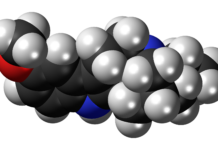waved over their heads to stimulate magnetic waves in the prefrontal cortex.
An unspecified number of patients were placed in a second control group, where they received only medications to control symptoms of depression, anxiety and insomnia resulting from their addiction.
At the end of the first assessment period, 69 percent of participants placed in the TMS group no longer had an interest in cocaine, compared to just 19 percent in the control group.
At the beginning of the second phase, researchers administered TMS to 10 participants from the original comparison group, eight of whom admitted to abusing cocaine during the pilot trial. Of those 10 people, seven were tracked for almost three months post-TMS. At the end of the observation period, all seven achieved abstinence.
“It’s a very exciting preliminary study, but it needs to be replicated with a lot more patients and it needs to be properly controlled,” said Malenka, who is also a colleague of Dr. Bonci. “You have to do it in a way where some of the patients are getting the real treatment, and the others are getting a placebo treatment.”
Even though the findings made by Dr. Bonci are preliminary, a participant involved in the study called their experience with TMS therapy “life-changing.” Treatment for cocaine addiction historically has been limited to psychotherapy, but Dr. Bonci and his team hope to improve on traditional methods and provide a well-rounded treatment plan that can completely eliminate cravings.















